Potřebujeme váš souhlas k využití jednotlivých dat, aby se vám mimo jiné mohly ukazovat informace týkající se vašich zájmů. Souhlas udělíte kliknutím na tlačítko „OK“.
ASTM E1768-95(2013)
Standard Guide for Ventilatory Behavioral Toxicology Testing of Freshwater Fish (Withdrawn 2022)
Automaticky přeložený název:
Standardní příručka pro ventilační Behavioral toxikologie Testování sladkovodních ryb
NORMA vydána dne 1.3.2013
Informace o normě:
Označení normy: ASTM E1768-95(2013)
Poznámka: NEPLATNÁ
Datum vydání normy: 1.3.2013
Kód zboží: NS-42961
Počet stran: 10
Přibližná hmotnost: 30 g (0.07 liber)
Země: Americká technická norma
Kategorie: Technické normy ASTM
Kategorie - podobné normy:
Anotace textu normy ASTM E1768-95(2013) :
Keywords:
ICS Number Code 11.220 (Veterinary medicine)
Doplňující informace
| Significance and Use | ||||||||||||||||||||||||||||
|
5.1 Responses that reflect oxygen consumption or utilization have often been targeted as useful indicators of incipient toxic conditions (26, 27, 28, 29, 30). In addition, sustained acute fish ventilatory behavioral responses reflect a physiological change in the organism and therefore might have ecological relevance. 5.2 For some time, the technological means have been available to log and display ventilatory signals over time. As a result, there are a considerable number of studies which examined ventilatory behavior of fish and other aquatic organisms. A large number of substances at lethal levels have been shown to elicit ventilatory responses relatively quickly 5.3 Given the data obtained thus far, it appears that fish ventilatory behavior may be a very sensitive and rapid indicator of acute toxicity if various aspects of this behavior (that is, rate and amplitude) are assessed and analyzed simultaneously. It appears that the more aspects of ventilatory behavior that are assessed, the more sensitive and rapid the system is 5.4 Although a variety of organisms have been examined including crayfish (37), aquatic insect larvae (31), and bivalves (13), most research in aquatic ventilatory behavior has used freshwater fish species. This is largely because fish are generally more ecologically “visible” in their importance in aquatic systems and many species (particularly the salmonids and centrarchids) have large opercular flaps that yield relatively clear ventilatory signals for measurement and evaluation. Species eliciting relatively small bioelectric ventilatory signals are more difficult to use given the electrode and amplification systems referenced in this guide. 5.5 Changes in ventilatory behavior have been shown to be a reliable indicator of accidental toxic spills or “slugs” of pollutants in wastewater and drinking water systems 1.1 This guide covers information on methods to measure and interpret ventilatory behavioral responses of freshwater fish to contaminants. 1.2 Ventilatory responses are often some of the first prelethal symptoms exhibited by animals to environmental stressors 1.3 Ventilatory responses of some fish species can be measured relatively easily and quickly, providing a useful tool for biomonitoring studies of wastewaters, pure chemicals, surface water, and ground water. 1.4 Appropriate studies of ventilatory responses can yield definitive endpoints such as no observable effect concentration (NOEC) or an EC50, often more rapidly than standard toxicity test methods 1.5 The mode of action of test substances and the type of chemical toxicant can be determined by examining ventilatory behavioral responses in conjunction with other physiological responses 1.6 Fish ventilatory behavior can be assessed in real-time using appropriate computer hardware and software 1.7 Given the technological constraints of electrical components, it is currently not feasible to monitor bioelectric signals, such as those elicited in ventilatory behavior, in saline (>2 ppt) or high conductivity (>3000 μmhos/cm) water using the procedures discussed in this guide. Therefore, this guide is restricted to the testing of freshwater matrices. 1.8 This standard does not purport to address all of the safety concerns, if any, associated with its use. It is the responsibility of the user of this standard to establish appropriate safety and health practices and determine the applicability of regulatory limitations prior to use. 1.9 This guide is arranged as follows:
|
||||||||||||||||||||||||||||
| 2. Referenced Documents | ||||||||||||||||||||||||||||
|
Podobné normy:
Historická
1.3.2013
Historická
1.3.2011
Historická
1.9.2010
Historická
1.6.2013
Historická
1.6.2010
Historická
1.3.2010
Doporučujeme:
Aktualizace technických norem
Chcete mít jistotu, že používáte pouze platné technické normy?
Nabízíme Vám řešení, které Vám zajistí měsíční přehled o aktuálnosti norem, které používáte.
Chcete vědět více informací? Podívejte se na tuto stránku.


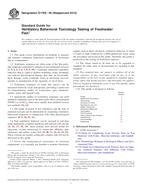
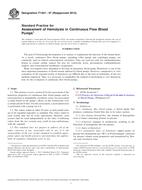 ASTM F1841-97(2013)..
ASTM F1841-97(2013)..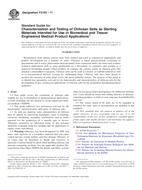 ASTM F2103-11
ASTM F2103-11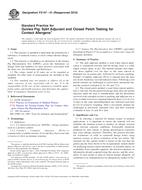 ASTM F2147-01(2010)..
ASTM F2147-01(2010)..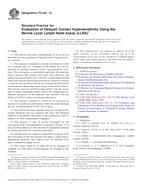 ASTM F2148-13
ASTM F2148-13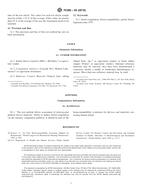 ASTM F2382-04(2010)..
ASTM F2382-04(2010)..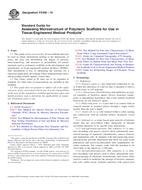 ASTM F2450-10
ASTM F2450-10
 Cookies
Cookies
